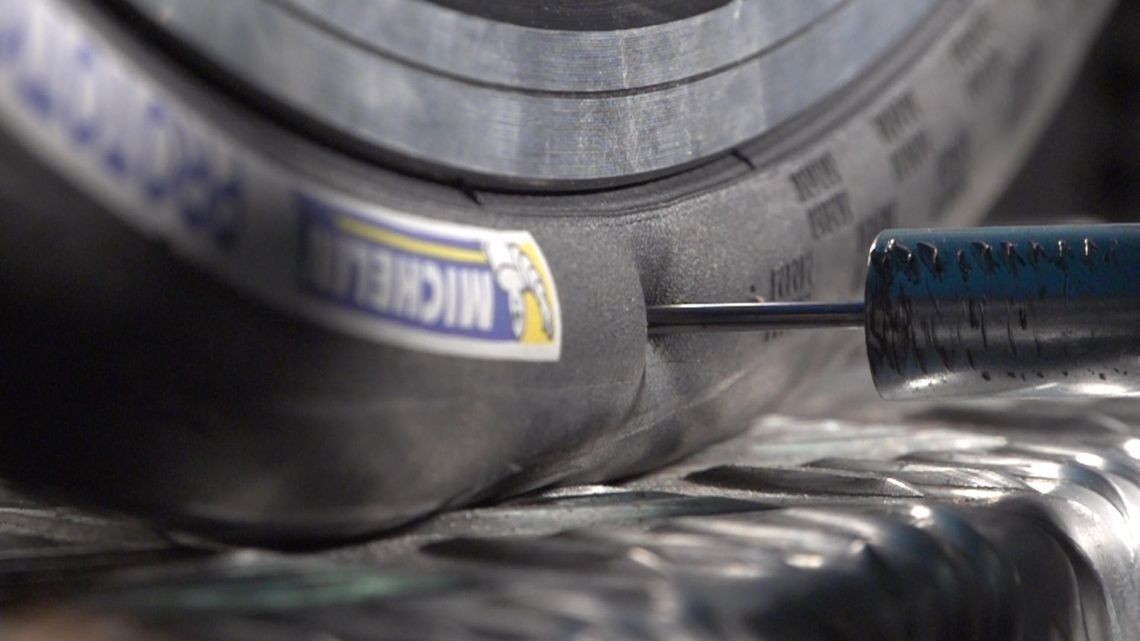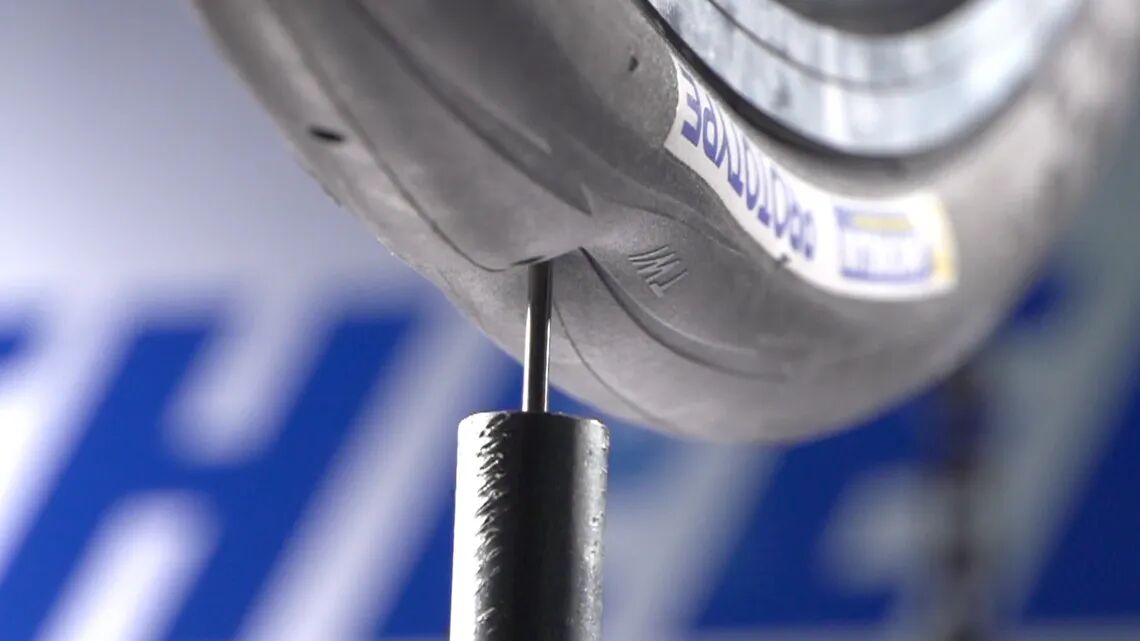Where can you find your bike tyre size?
Finding your bike tyre sizes is quite easy since they are generally displayed on the tyre sidewall.
But what may be more confusing for some is what these tyre sizes correspond to, as they can be expressed in three different ways: ETRTO, imperial or metric measurements. Let us shed some light on each of them.
Understanding bike tyre sizes
- Look for the numbers appearing on the tyre wall. You may need to spin the wheel round until you can see them, but they should still be quite easy to spot.
- Your bike tyre size will probably be given in one of these three ways:
ETRTO bicycle tyre size measurements
ETRTO bicycle tyre sizes appear as two digits separated by a dash: For example, 23-622, 25-622 or 28-622. The bike tyre size meaning is deciphered as follows:
23-622 / 25-622 / 47-622
The first digit is the tyre's width in millimetres at a given pressure and rim width. So, for instance, a typical road bike tyre size would display a smaller first pair of digits than a mountain bike (see mountain bike tyre sizes explained). MICHELIN follows the ETRTO recommendations.
23-622 / 25-622 / 47-622
For now, it’s important to understand that the second, three-digit number of an ETRTO bicycle tyre code relates to the rim ‘s seat diameter – again expressed in millimetres.
Keep in mind that the ETRTO measurement is the least used regarding the choice of your bicycle tyre.
Imperial bicycle tyre size measurement
Some cyclists are more familiar with the imperial measurement. It is shown as a sequence of numbers like for example: 29 x 2.10 or 29 x 2.25. This type of measurement is usually used for mountain bike & city tyres.
29 x 2.10 or 29 x 2.25
Here, the bike tyre sizes are given in inches. The first number states the overall diameter (including the tyre) at a given pressure and rim width. The term 29 inches is often used to define the rim’s seat diameter. But that’s not the case, 29 inches is the overall diameter including the tyre.
29 x 2.10 or 29 x 2.25
The second number gives the width of the tyre mounted on the rim. So, in the examples above, 2.10 represents two-and-a-tenth inches, while 2.25 represents two-and-a-quarter inches at a given pressure and rim width.
Imperial bicycle tyre sizes sometimes have three numbers:
22 x 1 3/8 x 1 1/4
When this happens, the first number always corresponds to the overall diameter in inches. Then, the second number give the tyre height and the final number represents the tyre's width. So, in the example given, the tyre would have a diameter of 22 inches, a height of one-and-three-eighths of an inch, and a width of one-and-a-quarter inches. That's why using MICHELIN's bike tyre size guide for cyclists can be very helpful for understanding bicycle tyre sizes
Metric bicycle tyre size measurements
Last but not least, cyclists will often encounter tyres with markings such as 700 x 23C or as 700 x 28B, for example. This sizes, which are in millimetres, are often used for road tyres measurement.
700 x 23C or as 700 x 28B
Here, the first number is the overall diameter of the tyre at a given pressure and rim width.
700 x 23C or as 700 x 28B
The second part indicates the tyre's width in millimetres, plus the rim size expressed by a letter code.
Do you find all this complicated? Don’t worry! Since you can find different type of measurements for the same tyre, MICHELIN provides a bike size chart to help you convert one measurement to another, as we will explain below.
Bike tyre size chart: How to convert a measurement ?
In our bike tyre size chart, there are 3 columns, one for each measurement, which makes it easy to convert bike tyres sizes from metric to imperial / or vice versa. You can also use the bike tyre size chart to convert ETRTO (European Tyre and Rim Technical Organisation) bicycle tyre size data to one of the other types.
This way you will find the correspondence between the measurement indicated on your tyre and that indicated for the tyre you wish to buy.
Bicycle tyres for different types of bikes
Typical Road bikes
MICHELIN produces tyres in bike tyre sizes suitable for almost all these different types of bicycles: cyclocross bikes, children's bikes, MTB and road bikes.
What's more, they are also available in different styles and with different tread patterns for many different applications.
For road bikes, bike tyre sizes are generally expressed in metric measurements. Although road bicycle tyre sizes can be expressed using the other systems, products like MICHELIN road racing tyres are always listed with their 700mm diameter appearing first. This is also standard practice for racing tyres, cyclocross tyres, everyday road bike tyres, training tyres as well as road bike tyres designed for harsher terrains – such as MICHELIN gravel tyres.
Typical MTBs and city bicycles
However, it’s not the same for mountain bikes. An MTB tyre size chart will typically display primary tyre dimensions in inches (Imperial measurement). This is the same for city bikes, a bicycle class which also includes trekking bikes as well as children's bicycles. Again, a bike tyre size calculator makes it possible to convert imperial measurements to the other two systems with relative ease.
ETRTO is a common standard
ETRTO is a useful multi-purpose system designed to work well for all types of bicycles. So, anything from a child’s first bicycle to a professional road bike will have tyre listings that use this system. But as said before, this type of measurement is the least used when selecting your tyres.
Can I change the tyre size on my bike?
Perhaps you are wondering whether you can change bicycle tyre sizes to suit different situations? It is sometimes possible to use different bike tyre sizes, provided the difference in size is only negligible. For example, some MTB riders choose slightly wider tyres on certain terrains.
However, the dimensions of your wheel rim will obviously remain the same, so it is usually best to stick to the recommended bike tyre size. Otherwise your bike’s performance could be severely impaired, which could even interfere with the operation of the brakes. Your bike tyre size depends on your bike specifications. So if you want to change your tyre size, MICHELIN advises you to contact a certified professional or your bike manufacturer.


